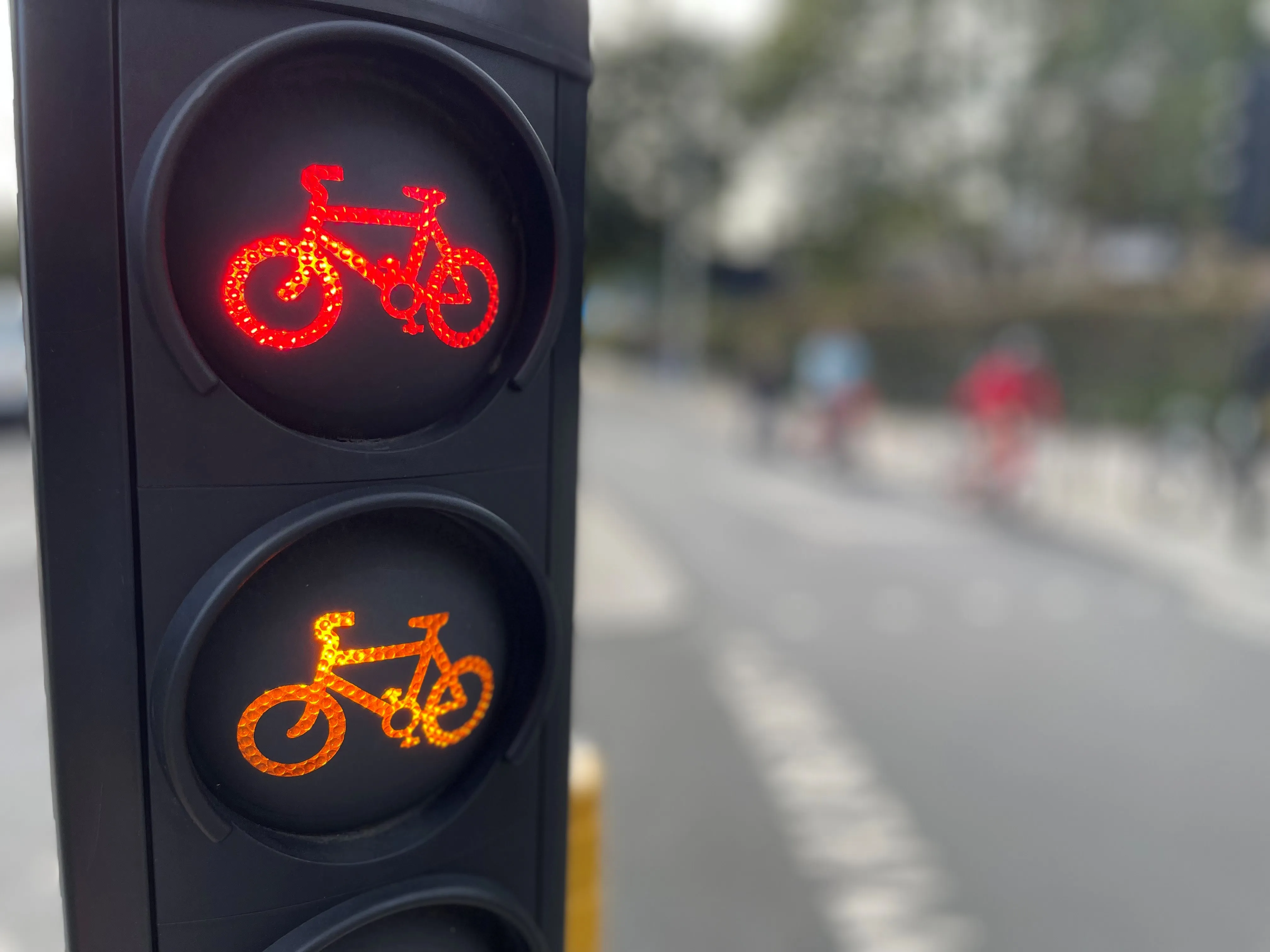New low-level traffic lights designed for cyclists have been authorised for use following safety trials, the first time the lights have been used in the UK, transport minister Stephen Hammond has announced.
More than 80 per cent of cyclists favoured the use of low-level signals during the track-based trials of the system, which works by repeating the signal displayed on main traffic lights at the eye level of cyclists.
December 16, 2013
Read time: 2 mins
New low-level traffic lights designed for cyclists have been authorised for use following safety trials, the first time the lights have been used in the UK, transport minister Stephen Hammond has announced.
More than 80 per cent of cyclists favoured the use of low-level signals during the track-based trials of the system, which works by repeating the signal displayed on main traffic lights at the eye level of cyclists.
Initially the system will be piloted at Bow but the1837 Department for Transport (DfT) is working with 1466 Transport for London (TfL) to extend it to a further eleven sites in London.
The lights will give cyclists improved, clearer signals to ensure they have the information they need at the junction. Research is currently underway that will give the Department for Transport (DfT) the evidence to consider approving the use of these lights to provide an “early start” for cyclists.
Hammond said: “The government wants to see cycling made safer and we welcome innovative designs from local authorities.
“Over the last few years we’ve worked very closely with Transport for London to deliver better infrastructure for cyclists. Transport for London are working hard on proposals to make cycling safer and these low-level lights mean that cyclists will have dedicated traffic lights that give them the information they need.
There is always more that we can do and there is a lot of research underway into further measures that we can look at.”
Leon Daniels, managing director of surface transport at TfL said: “Low level cycle signals are common place in certain parts of Europe and we are keen to make them common place in London. These new signals, which will be a further improvement to the innovative traffic signals at Bow, will provide cyclists with a better eye-level view as to which stage the traffic signals are at.
“Working closely with the Department for Transport, we will work to have these on street during January 2014, and should the technology prove to be successful, further trials will be carried out across London throughout 2014.”
More than 80 per cent of cyclists favoured the use of low-level signals during the track-based trials of the system, which works by repeating the signal displayed on main traffic lights at the eye level of cyclists.
Initially the system will be piloted at Bow but the
The lights will give cyclists improved, clearer signals to ensure they have the information they need at the junction. Research is currently underway that will give the Department for Transport (DfT) the evidence to consider approving the use of these lights to provide an “early start” for cyclists.
Hammond said: “The government wants to see cycling made safer and we welcome innovative designs from local authorities.
“Over the last few years we’ve worked very closely with Transport for London to deliver better infrastructure for cyclists. Transport for London are working hard on proposals to make cycling safer and these low-level lights mean that cyclists will have dedicated traffic lights that give them the information they need.
There is always more that we can do and there is a lot of research underway into further measures that we can look at.”
Leon Daniels, managing director of surface transport at TfL said: “Low level cycle signals are common place in certain parts of Europe and we are keen to make them common place in London. These new signals, which will be a further improvement to the innovative traffic signals at Bow, will provide cyclists with a better eye-level view as to which stage the traffic signals are at.
“Working closely with the Department for Transport, we will work to have these on street during January 2014, and should the technology prove to be successful, further trials will be carried out across London throughout 2014.”









